Five principles of holistic science communication
Suzanne Webster ·Last month, Bill, Vanessa, and I attended the Science of Science Communication III Sackler Colloquium at the National Academy of Sciences in Washington, DC. This blog follows Vanessa’s previous post, and is the second in a series of three blogs reflecting on our experiences at this event. The conference was very information-rich and thought-provoking, and it is difficult to distill everything into even three blogs!
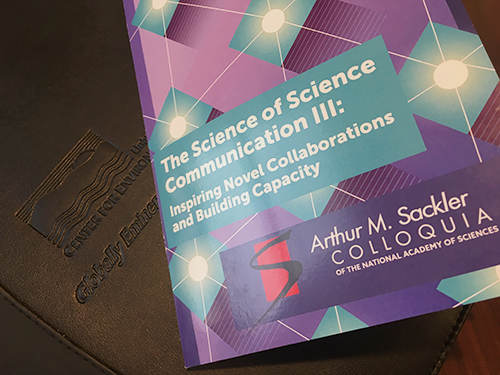
One major take-home message was that if we want to effectively engage in the practice and art of science communication, and increase both public understanding and public impact of our science, it is crucial that we study science communication using a scientific approach that is not only systematic and academically rigorous, but also creative and integrative. Based on the presentations shared during the Colloquium, in this blog I will discuss five principles of holistic science communication:
1. Assemble a diverse and interdisciplinary team
a) Conceptually, “expertise” is culturally defined and context-dependent, therefore decision-making power should be shared among members of a team. Scientists should recognize that while they may be an expert on a particular facet of a complex problem, they may not be qualified to serve as an expert on all aspects of the problem. For example, in the case of autonomous vehicles, a computer engineer may be most qualified to design and code a car but they are not the most qualified to make ethical decisions that dictate how the car is programmed to respond in unavoidable accidents, or to communicate with the public about the potential impacts the cars may have on society. Therefore, engineers, philosophers, and communicators should collaborate to form interdisciplinary scientific teams to best address such complex issues.
b) Science is like any other good or service—it must be strategically marketed (or communicated) if we want members of the public to accept, use, or support it in their daily lives. Thus, research scientists need to partner with content creators and practitioners in order to effectively share and “sell” scientific results.
c) Collaboration often improves decision making and problem solving processes. People have diverse cognitive models that affect the way each of us sees the world and how we understand or resolve problems. Adequate “thought world diversity” can help teams create and communicate science that is more creative, representative of a wider population, and more broadly applicable. Epistemological gaps cause teams to miss out on valuable insights and alienate large portions of their audience. For example, at the Colloquium, there was a presentation on how to do “ethical and trustworthy science,” which was packed with recommendations related to data reproducibility and avoiding bias, but did not even touch on the ethical issues of most interest to social scientists, such as protecting human subjects and researcher reflexivity. The presentation was, ironically, extremely biased (towards the “hard” sciences) and undoubtedly much less valuable to the diverse audience than it might have been, had the presenters collaborated with researchers outside of their own profession and shared a more comprehensive overview of ethics in scientific research.
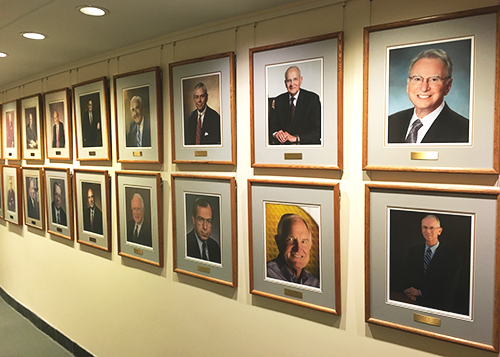
2. Tell a story
a) Great science and great stories have something in common—as Frank Sesno explained, both involve “Compelling characters overcoming obstacles to achieve a worthy outcome.” Holistic science communication, like a captivating story, should therefore integrate diverse facts into a comprehensive message, and tell the story of the research process and results in a way that is engaging and relevant to an audience.
b) There is a move towards “tweetable” research, or attention-grabbing, tweet-sized science. It is important for science communicators to be able to create clear, concise, and informative statements describing their research; however we need to do so without sacrificing the elements that make a good story, such as the backstory, rich details, and multiple perspectives. Be careful to avoid sensationalism and do not shy away from studying complex issues in favor of addressing “tweet-sized problems.”
c) In order to help our science tell a more complete story that includes more voices and resonates with more diverse audiences, James Fowler encouraged us to “Move out of the stage of counting things and into a stage where we think about qualifying”. Scientists should be less numbers-driven and more willing and eager to incorporate qualitative data and experiential knowledge into their research. We could try this at IAN by incorporating data that is not easily quantifiable into report cards. Sometimes we might be able to tell a better story by resisting the urge to reduce all data into numeric grades, and instead explore complementary approaches (perhaps from the social sciences) for synthesizing and communicating complex information.
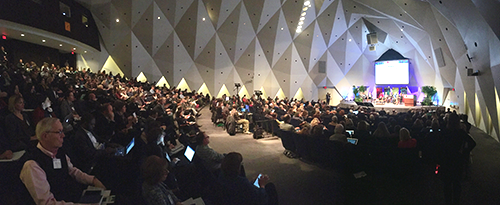
3. Make the message personal
a) Clearly articulate why people should care about your science. This involves thinking about what matters to the audience and then framing your message in a way that makes it more localized. When communicating about complex scientific issues, forego some of the complex (or politicized) details and instead talk about cause and effect relationships that impact people’s daily lives. If people can visualize or conceptualize a personal benefit, they are more likely to be interested in your science and listen to your recommendations.
b) The identity and public perception of the messenger matters. As communicators, we must consider how our own identities might impact the way our message is received. In some cases, it might make sense to work with social marketers or boundary organizations that can help craft and strategically deliver scientific messages in a way that is palatable for the target audience. For example, Peter Hancock suggested we consider whether we, as members of the public, might be more agreeable to using autonomous cars marketed by computer companies or car companies. Though these industries collaborate to create this technology, the team should carefully consider who might be the most well-received science communicator.
c) Be mindful of the “information climate,” or the socio-political landscape in which your science will be received. Science communicators need to consider the mental models of their audience members and think about how to best connect with audiences that may be culturally different or resistant to the new information. Sustaining dialogue and personal relationships with members of the audience can help science communicators avoid insensitivity or tone-deafness, and instead discover the best ways to depoliticize issues and communicate in a non-threatening and respectful way that resonates with the public.

4. Communicate with people, rather than to them
a) It is mutually beneficial for scientists and the public to establish a two-way dialogue. Engaging the public and listening to their input helps scientists make their research more socially valuable and comprehensive, while scientists’ research helps the public to make informed, evidence-based decisions. Two-way communication is especially important for research concerning controversial science topics, such as genetically-modified organisms, human gene editing, and artificial intelligence, when science crosses boundaries into other doctrines like philosophy or religion. According to a 2017 study led by Dietram Scheufele, as people get more religious or more knowledgeable, they have an increasingly strong belief that scientists should consult with the public when making decisions in controversial science. Excluding other voices from what should be an inclusive conversation causes scientists to lose public respect, rapport, and support.
b) Face-to-face interactions and shared experiences are important for developing relationships and creating learning outcomes. Arthur Lupia encouraged us to think about structures or processes that might be most effective for public engagement, and suggested citizen science as a possible option. Effective science communicators should aim to create a moments that enthuse people to keep learning about our science and asking questions, even after we are gone.
c) Science communicators need to abandon the information deficit model. The deficit model posits that skepticism or disuse of science stems from the public’s lack of knowledge—if only scientists take time to educate the masses and communicate information, then science-based decision making and public support of science will prevail throughout society. This model does not work! Illah Nourbakhsh offered many examples of science that was communicated to the public but then not embraced in a way that the deficit model would predict. Information on climate change has been available for years but there is still not widespread public acceptance. A large percentage of Americans do not ‘believe' in evolution, despite ample scientific evidence. Vaccines were invented decades ago but are still hotly debated. Autonomous car technology was more or less completed back in the 1990s but scientists are still trying to get the public to use it. In all these cases, the science has been shared with the public, but has not yet moved to action or created desired political and behavioral changes. The missing link here is not communication, but effective communication.
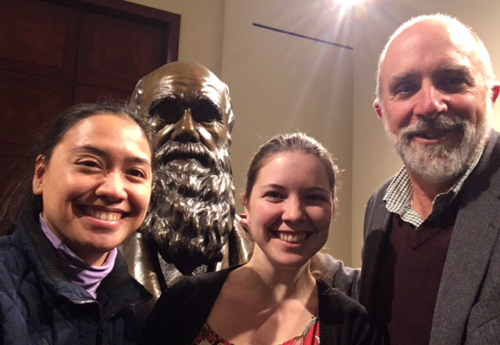
5. Remember to be a human first!
a) If we want people to understand and use our science in their lives, we must earn their trust. According to Susan Fiske, credibility is comprised of expertise and trust, but as it stands now, the public perceives science as an elite and inaccessible interest, and perceives scientists as “competent but cold.” Scientists need to re-humanize ourselves in the public’s eye. We should not only communicate our science, but also communicate who we are and where we come from in order to give our expertise context and gain trust as humans. One way the Colloquium moderators accomplished this was to begin each session by introducing each of the speakers with professional biographies (Jane Doe is an expert in X working at Y University), along with “fun facts” that gave the audience a tiny glimpse into these experts’ lives as cosplayers, climbing enthusiasts, or reptile lovers, for example. This tactic made the speakers immediately more relatable and made me as an audience member more excited to learn about their professional interests. Ahna Skop encouraged us to use art to make science more accessible and to “always have a hobby in science” so we can engage people with something we love and they know. Examples of this are Ahna’s science cakes on her food blog, the Dance your Ph.D. competition, and the Crochet Coral Reef.
b) Scientists are often concerned with maintaining objectivity and eliminating bias. While these goals are understandable in a lab setting with respect to experimental design and execution, they are not attainable, or even desirable, in a real-world setting with respect to complex and controversial societal issues. Although scientists often, as Alan Leshner pointed out, “have trouble being publicly human,” and think that being an advocate will “taint the science,” we all need to take a page from a social scientists’ book and practice self-reflexivity. That is, scientists should realize that they are not objective actors, there is no such thing as unbiased science, and some science is inherently and unavoidably political in today’s climate. When communicating science, we must acknowledge our own biases and maintain honest and transparent communication with our audience.
c) Scientists should work with other members of society to create socially-accepted and socially-useful science. To do this, Cornelia Dean encouraged us to remember our role as individual citizens and “participate in the public life of our country” as informed, social beings. First and foremost, “the responsibility of science is to deliver to society,” and in order to fulfill this social contract, scientists need to collaborate with experts in other disciplines, and establish a natural two-way dialogue with members of wider society in order to ensure that science is meeting the needs of the public.
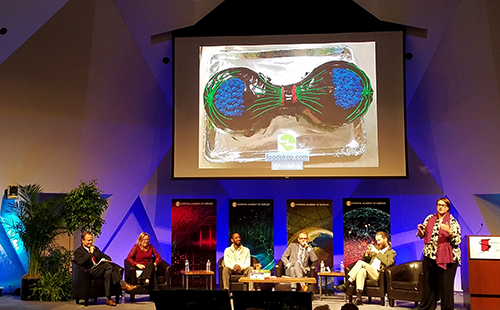
In sum, this conference was an incredible opportunity to think critically about my role as not only a science communicator, but as an interdisciplinary scientist and as a normal person who is passionate about science engagement. Following these principles will not only improve my science communication skills, but also remind me to always be mindful of my responsibility to society as a scientific researcher and as a citizen.
About the author
Suzanne Webster
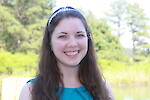
Suzi Webster is a PhD Candidate at UMCES. Suzi's dissertation research investigates stakeholder perspectives on how citizen science can contribute to scientific research that informs collaborative and innovative environmental management decisions. Her work provides evidence-based recommendations for expanded public engagement in environmental science and management in the Chesapeake Bay and beyond. Suzi is currently a Knauss Marine Policy Fellow, and she works in NOAA’s Technology Partnerships Office as their first Stakeholder Engagement and Communications Specialist.
Previously, Suzi worked as a Graduate Assistant at IAN for six years. During her time at IAN, she contributed to various communications products, led an effort to create a citizen science monitoring program, and assisted in developing and teaching a variety of graduate- and professional-level courses relating to environmental management, science communication, and interdisciplinary environmental research. Before joining IAN, Suzi worked as a research assistant at the Marine Biological Laboratory in Woods Hole, MA and received a B.S. in Biology and Anthropology from the University of Notre Dame.
Next Post > The Science of Science Communication
Comments
-
Tanbin Hasan 6 years ago
Thank you very much for this helpful post in 2018.We want more post for our improvement.
-
Jodie Mehrtens 6 years ago
Great post! So many great points (and great links) to keep in mind.
I went to a presentation on the key messages from the World Science forum in Jordan this year:
Science needs to become more collaborative and multidisciplinary to be effective especially when addressing "wicked" problems like climate change.
If solving the problem requires behaviour change, then pure scientists will need to work closer with social scientists. Not only do we need to be better communicators, but be strategic in our communication.
-
Atika 5 months ago
Thank you for sharing this great information with us, i really appreciate your post!